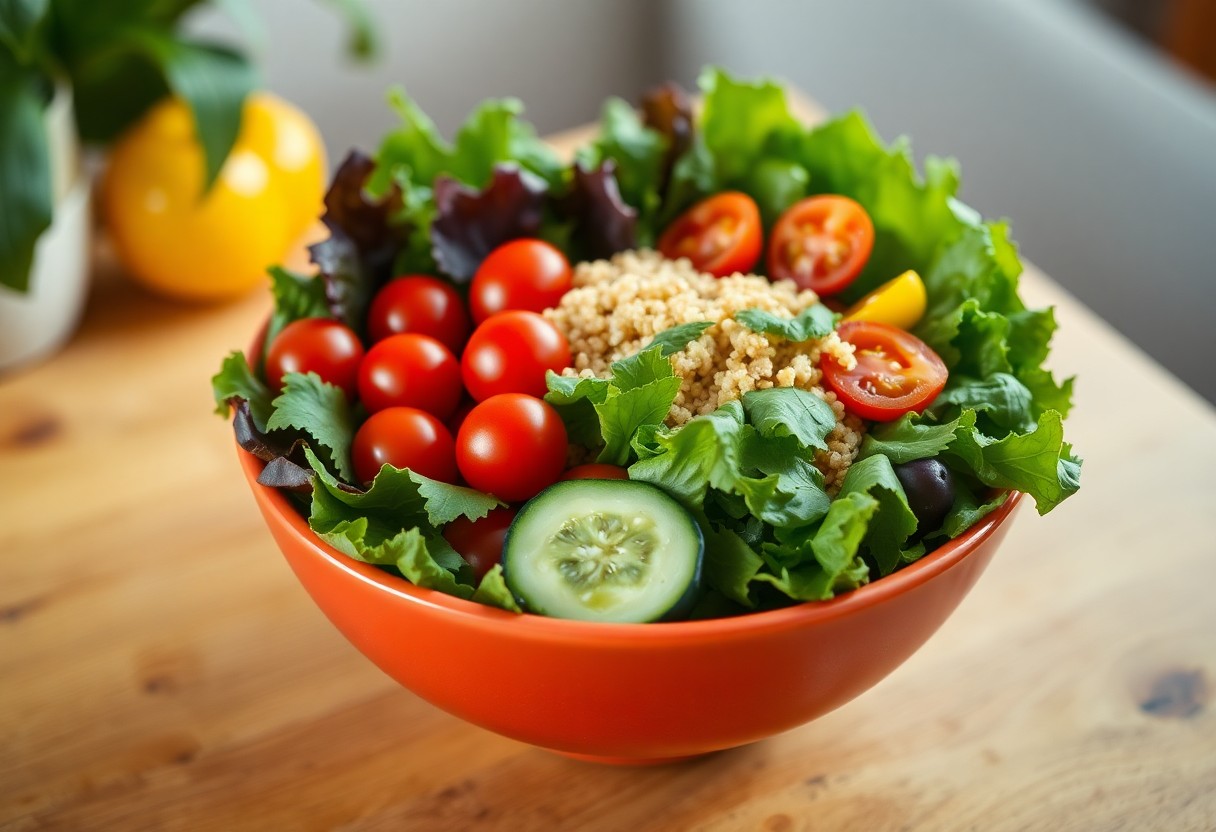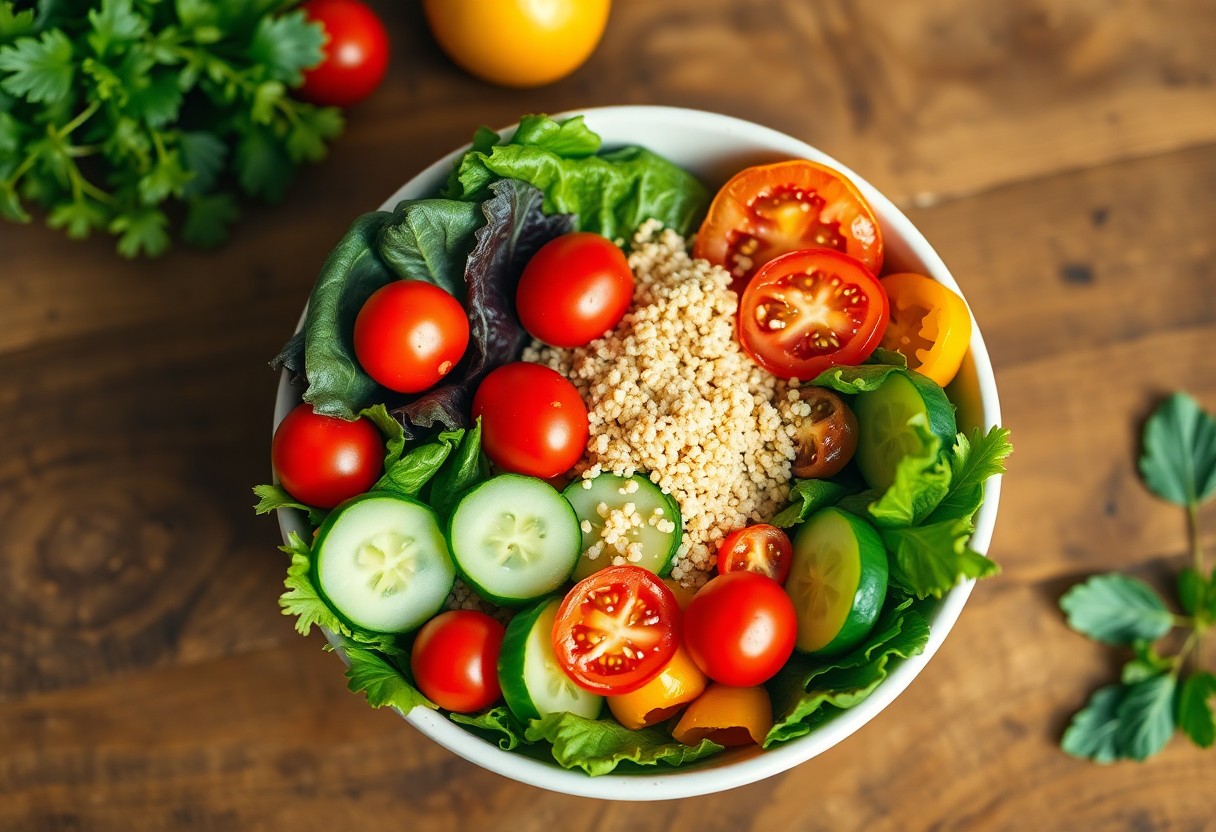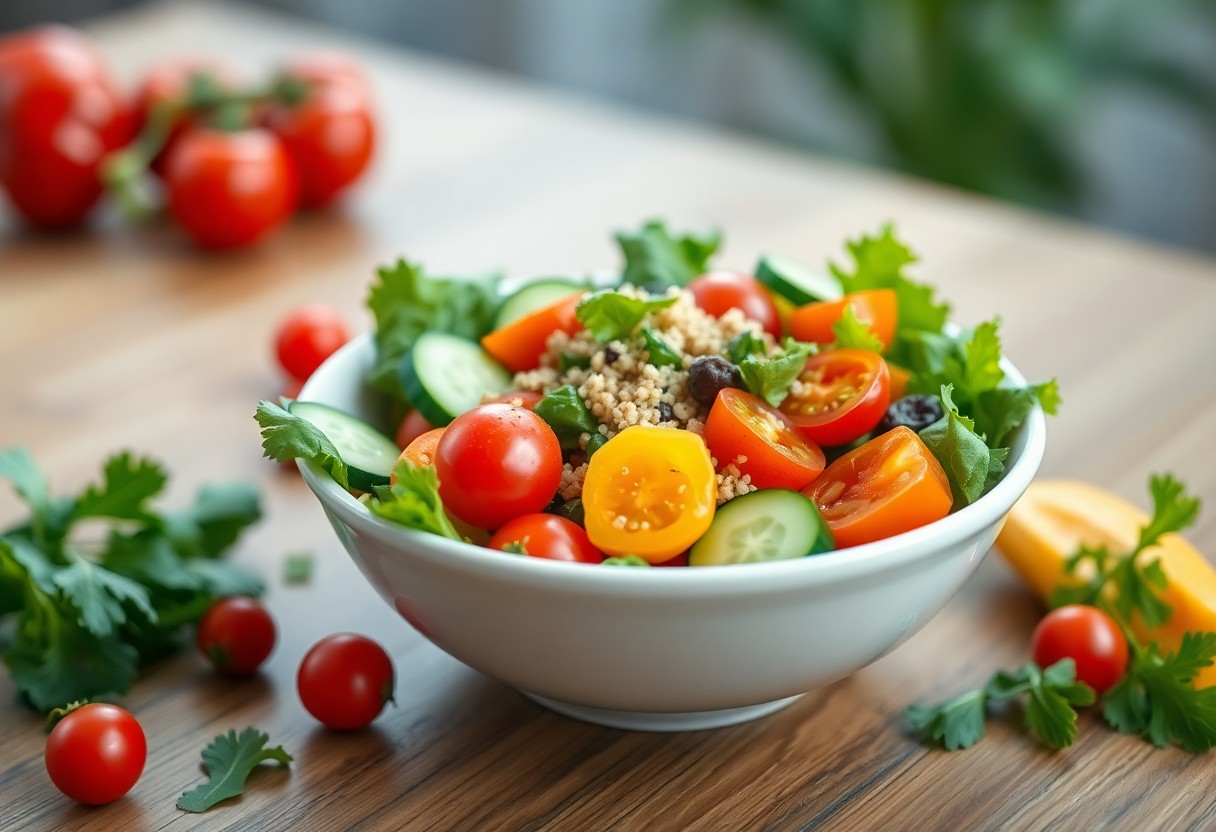You might be surprised to learn that incorporating low-calorie foods into your diet can significantly assist your weight loss journey. These nutrient-dense options can keep you satisfied while helping cut down on overall calorie intake. Not only do they provide vital vitamins and minerals, but they also encourage healthier eating habits. For an extensive list, check out 28 High-Volume, Low-Calorie Foods for Fat Loss, which will help you discover delicious ways to enhance your meals without the extra calories.
Understanding Low-Calorie Foods
For anyone looking to lose weight, understanding low-calorie foods is necessary. These foods provide fewer calories than traditional options without sacrificing volume or taste, allowing you to eat satisfying portions while still creating a calorie deficit. By incorporating low-calorie foods into your diet, you can enjoy a variety of meals that support your weight loss goals without feeling deprived.
Definition and Importance
Definition: Low-calorie foods are those that offer fewer calories relative to their serving size, often packed with necessary nutrients. Their importance lies in their ability to help you manage your caloric intake effectively while providing sustenance and nourishment, making them a valuable component of a weight loss plan.
Nutritional Benefits
Along with being lower in calories, low-calorie foods often boast high nutritional value, offering vitamins, minerals, and antioxidants necessary for your overall health. These foods help you feel full and satisfied without exceeding your calorie limits, allowing you to nourish your body while shedding excess weight.
Understanding the nutritional benefits of low-calorie foods enables you to make informed choices that support your wellness journey. Many low-calorie options, such as fruits, vegetables, and lean proteins, not only provide necessary nutrients but also enhance your metabolism and promote better digestion. Incorporating these foods into your diet can lead to improved energy levels and overall health, making your weight loss efforts more successful and sustainable.
Types of Low-Calorie Foods
Even when trying to lose weight, you can enjoy a variety of delicious foods. Below are some types of low-calorie foods to consider:
- Fruits
- Vegetables
- Lean Proteins
- Whole Grains
- Legumes
Knowing the types of low-calorie foods helps you make better dietary choices that support your weight loss journey.
| Food Type | Examples |
| Fruits | Apples, Berries, Watermelon |
| Vegetables | Spinach, Broccoli, Carrots |
| Lean Proteins | Chicken, Turkey, Fish |
| Whole Grains | Quinoa, Brown Rice, Oats |
| Legumes | Lentils, Chickpeas, Black Beans |
Fruits and Vegetables
Above all, incorporating a wide range of fruits and vegetables into your diet can significantly contribute to weight loss. These foods are naturally low in calories and high in vital nutrients, keeping you full without the added calories. Aim to fill half your plate with fruits and veggies during meals for maximum benefit.
Lean Proteins
By including lean proteins in your diet, you can effectively support your weight loss goals. Lean meats, poultry, fish, and plant-based proteins like tofu and legumes provide vital amino acids while being lower in calories compared to fatty cuts of meat.
Consequently, lean proteins not only help with muscle maintenance but also keep you satiated for longer periods, reducing the likelihood of overeating. Incorporating sources like grilled chicken, fish, or plant-based options into your meals can aid your weight loss efforts while ensuring you receive necessary nutrients.

High-Fiber Foods
While many foods can aid in your weight loss journey, high-fiber options stand out due to their ability to keep you full longer and stabilize blood sugar levels. Incorporating fiber-rich foods into your diet can not only support weight management but also enhance overall digestive health. As you choose your meals, prioritize these nutrient-dense items to enhance satiety and minimize unhealthy snacking.
Role of Fiber in Weight Loss
On your path to weight loss, fiber plays an vital role by promoting feelings of fullness and reducing overall calorie intake. It slows down digestion, which helps you maintain steady energy levels and reduces cravings. Including ample fiber in your meals can assist you in achieving and sustaining your weight loss goals more effectively.
Examples of High-Fiber Options
Any meal can become healthier by incorporating high-fiber foods such as fruits, vegetables, legumes, and whole grains. Options like beans, lentils, chia seeds, oats, and avocados not only provide fiber but also deliver vital nutrients to support your well-being.
Hence, you can easily integrate these high-fiber foods into your daily diet. For instance, starting your day with a bowl of oatmeal topped with berries or enjoying a hearty lentil soup for lunch can make a significant difference. Snacking on raw vegetables with hummus or including a side salad with dinner are simple yet effective ways to boost your fiber intake. The diverse range of options ensures that you won’t feel deprived while on your weight loss journey.
Low-Calorie Snacks
Once again, choosing low-calorie snacks can help you satisfy your cravings while supporting your weight loss journey. Opt for fresh fruits, raw vegetables, or a handful of nuts, as these options are filling and nutrient-dense. For more information on a comprehensive Low-Calorie Diet, consider incorporating these snacks into your daily routine for a healthier lifestyle.
Healthy Alternatives
Around your day, instead of reaching for sugary treats or processed junk food, consider healthier alternatives. Air-popped popcorn, Greek yogurt with berries, or cucumber slices with hummus can keep you satisfied without the excess calories.
Portion Control Tips
To maintain portion control and avoid overeating, consider the following tips:
- Use smaller plates and bowls to create the illusion of a fuller plate.
- Pre-portion snacks into small containers to help manage your serving sizes.
- Pay attention to hunger cues and eat slowly to enjoy your food.
- Keep a food diary to track your intake and motivate yourself.
Knowing these simple approaches can help you successfully manage your portions and stay on track with your health goals.
The key to portion control is to be mindful of what you eat. Here are some effective strategies to consider:
- Fill half your plate with vegetables for volume and nutrients.
- Use measuring cups or a food scale for accuracy when serving meals.
- Stay aware of your body’s signals and stop eating when you're satisfied.
- Snack mindfully by avoiding distractions like television or phones.
Knowing the importance of portion control can enhance your weight loss efforts and support a balanced diet.

Incorporating Low-Calorie Foods into Your Diet
Despite popular belief, incorporating low-calorie foods into your diet doesn't have to be challenging. By gradually integrating fruits, vegetables, and lean proteins, you can enhance your meals without significantly increasing your caloric intake. Focus on filling your plate with nutrient-dense options that provide flavor and satisfaction. By making simple swaps, such as replacing refined grains with whole grains or opting for fresh produce instead of processed snacks, you can easily support your weight loss journey while enjoying a variety of delicious meals.
Meal Planning Strategies
Above all, effective meal planning is key to successfully incorporating low-calorie foods into your diet. Start by dedicating time each week to plan your meals and snacks. Creating a shopping list based on your meal plan will help you stay organized and avoid impulse buying. Consider preparing larger batches of healthy meals to freeze or meal prep throughout the week, ensuring you always have convenient, low-calorie options readily available. This approach not only saves time but also encourages healthier choices.
Cooking Techniques for Flavor
At the heart of enjoyable low-calorie meals is the way you cook and season your food. Utilizing techniques like grilling, steaming, or baking can preserve nutrients while enhancing flavors without adding extra calories. Experimenting with herbs, spices, and citrus juices will elevate your dishes and keep your taste buds satisfied. Use broths and stocks for added depth in soups or stews, and try creating marinades for lean proteins to enrich their flavor profile.
Indeed, mastering cooking techniques will transform your approach to low-calorie meals. By using methods like roasting vegetables or sautéing with a splash of olive oil, you can develop rich flavors that make nutritious foods more appealing. Explore various seasoning combinations to discover your favorites, and don’t shy away from experimenting with new ingredients or cooking methods. This not only enhances the taste but also keeps your meals exciting and encourages you to stick to your healthy eating habits.

Common Misconceptions
To truly understand the role of low-calorie foods in weight loss, it’s important to debunk common misconceptions. Many people believe that all low-calorie foods are healthy and can be consumed in excess without consequences. Others think that a low-calorie diet means sacrificing flavor and satisfaction. By addressing these misunderstandings, you can make informed choices that support your weight loss journey while enjoying a balanced diet.
Myths about Low-Calorie Diets
Myths abound when it comes to low-calorie diets. Many assume that eating fewer calories always leads to immediate weight loss, overlooking the importance of nutrient balance. Some believe that low-calorie foods automatically mean less satisfaction, which discourages their use. By dispelling these inaccuracies, you can better navigate your dietary choices and create a sustainable eating pattern that works for you.
Addressing Nutritional Concerns
An important aspect of low-calorie diets is addressing potential nutritional concerns. Some worry that reducing calorie intake might lead to nutrient deficiencies. However, with careful planning and a focus on whole, nutrient-dense foods, you can maintain a balanced diet even at lower calorie levels.
A well-rounded low-calorie diet can be achieved by incorporating a variety of fruits, vegetables, whole grains, lean proteins, and healthy fats. This allows you to obtain necessary vitamins and minerals while still managing your calorie intake. You should aim to include diverse foods that not only satisfy your taste buds but also meet your nutritional needs, ensuring you feel energized and healthy throughout your weight loss journey.
Conclusion
With this in mind, incorporating low-calorie foods into your diet can be an effective strategy to promote weight loss. These foods not only help you feel full while consuming fewer calories but also provide crucial nutrients for overall health. By choosing options like fruits, vegetables, lean proteins, and whole grains, you empower your weight loss journey and improve your well-being. Focus on creating balanced meals that satisfy your hunger, and you're more likely to stick to your weight loss goals.
FAQ
Q: What are low-calorie foods that can help with weight loss?
A: Low-calorie foods that promote weight loss include vegetables such as broccoli, spinach, and zucchini, as well as fruits like berries, apples, and watermelon. Other options include legumes, lean meats like chicken or turkey, fish, whole grains, and low-fat dairy products. These foods are typically high in fiber and protein, which can help keep you full without consuming too many calories.
Q: How do low-calorie foods aid in weight loss?
A: Low-calorie foods are beneficial for weight loss because they provide necessary nutrients while keeping calorie intake in check. Foods that are high in fiber and protein can enhance satiety, meaning you feel fuller longer. Additionally, they allow for larger portions without exceeding calorie limits, making it easier to maintain a calorie deficit necessary for weight loss.
Q: Can low-calorie foods actually be filling?
A: Yes, many low-calorie foods can be quite filling. Foods high in water content, such as fruits and vegetables, are low in calories yet provide bulk, which helps you feel satisfied. Foods high in fiber, such as legumes and whole grains, also contribute to feelings of fullness. Incorporating these foods into your meals can help stave off hunger pangs and reduce overall calorie consumption.
Q: Are low-calorie foods always healthier options?
A: While many low-calorie foods are healthy and nutrient-dense, not all low-calorie options are equally beneficial. It's important to focus on whole, minimally processed foods rather than those that are low in calories but high in sugars or unhealthy fats. For example, low-calorie snacks that are highly processed may lack necessary nutrients. Opt for natural low-calorie options like fruits, vegetables, and whole grains to maximize health benefits.
Q: How can I incorporate low-calorie foods into my diet?
A: Incorporating low-calorie foods into your diet can be done in various ways. Start by filling half your plate with vegetables at every meal. Choose fruits for snacks instead of high-calorie options. Experiment with new recipes that highlight lean proteins and whole grains. Also, consider adding legumes to salads, soups, or as side dishes to enhance your meals while keeping calories low.








0 Comments